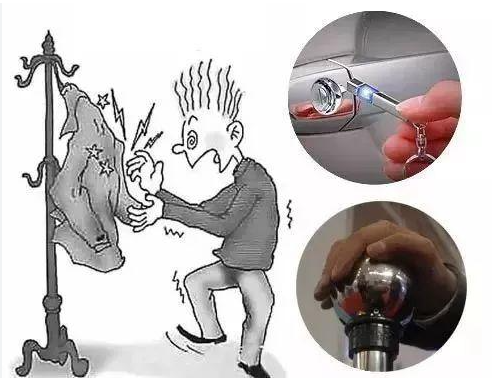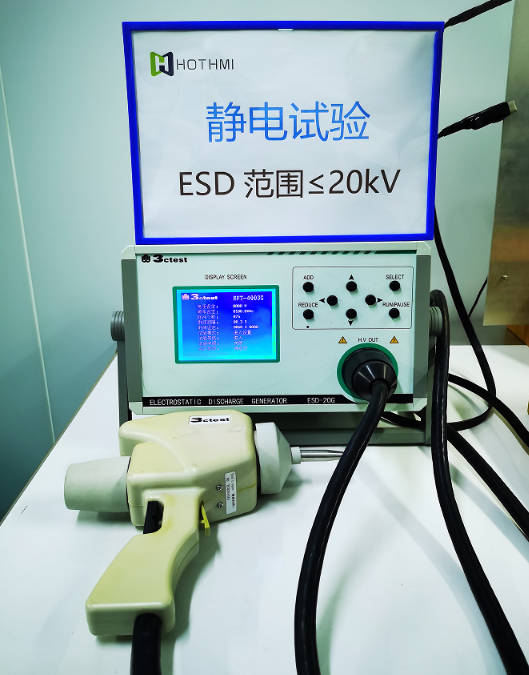Sources of static electricity
(1) Human static electricity. Static electricity generated by human activities, friction, contact and separation between people and objects such as clothes, shoes, socks, etc. is one of the main sources of static electricity in electronic product manufacturing. Human static electricity is the main cause of hard (soft) breakdown of devices. The static voltage generated by human activities is 500~2000V. In addition, air humidity has a great influence on static voltage, and it will increase by one order of magnitude in a dry environment. When a charged human body touches the ground wire, a discharge phenomenon will occur, and the human body will have different degrees of electric shock reaction, and the degree of reaction is called electric shock sensitivity.
(2) Work clothes. When chemical fiber or cotton work clothes rub against work surfaces and chairs, static electricity voltage of more than 6000V can be generated on the surface of the clothes, and the human body will be charged. At this time, when it comes into contact with the device, it will cause discharge and easily damage the device.
(3) Work shoes. The insulation resistance of rubber or plastic soles is as high as 10^13 ohms. When rubbing against the ground, static electricity is generated and the human body is charged.
(4) When devices encapsulated with resin, paint film, or plastic film are placed in packaging for transportation, friction between the device surface and the packaging material can generate several hundred volts of static electricity, which can discharge sensitive devices.
(5) Various packaging, material boxes, turnover boxes, PCB racks, etc. made of polymer materials such as PP (polypropylene), PE (polyethylene), PS (polypropylene), PVR (polyurethane), PVC (polyvinyl chloride), and resin may generate 1000~3500V of static electricity due to friction and impact, which can discharge sensitive devices.
(6) Ordinary workbenches generate static electricity due to friction.
(7) Insulated floors such as concrete, waxed and polished floors, and rubber sheets have high insulation resistance, and static electricity on the human body is not easy to leak.
(8) Electronic production equipment and tools, such as high-voltage transformers, AC and DC circuits in soldering irons, wave soldering machines, reflow soldering furnaces, placement machines, debugging and testing equipment, etc., will induce static electricity on the equipment. If the equipment static electricity leakage measures are not good, sensitive devices will fail during the manufacturing process. The hot air circulation in the oven and the friction with the box body, the CO2 in the CO2 low-temperature box cooling box, and the steam will all generate a large amount of static charge.
Static electricity hazards

If static electricity is not controlled, it may cause the following hazards
(1) Impact on production. Most packaging materials are poor conductors. Even with the latest machine designs, static electricity caused by friction and separation of materials during production is difficult to avoid.
(2) Dust accumulation. Neutral air molecules are attracted to the surface of charged objects, and charged particles are also adsorbed on the surface of neutral objects. This may lead to high scrap rates, rework rates, customer complaints and loss of reputation.
(3) Personal safety. The uncomfortable electric shock caused by static electricity when stepping out of a car is about 15kV. Voltages of 20~60kV are very common in the plastics and processing industries. The electric shock caused by static electricity is not only uncomfortable, but the person's avoidance reaction after being shocked may also cause more serious accidents.
(4) Fire and explosion. When working in a flammable environment, fast-moving static electricity has enough energy to cause combustion. Sparks will be generated when the electric field of a grounded object is enhanced, or flashover to the ground will occur when the charge on the insulator reaches the discharge value. The resulting fire not only causes losses to production, but may also cause the complete destruction of the factory.
(5) Electrostatic discharge. This is quite common in the electronics industry. As the size of circuits becomes smaller and smaller, the side effect is that the sensitivity of static electricity in production increases. Now 30V is the static limit of the semiconductor industry, and hard disk heads are affected by static electricity below 3V. Static electricity problems not only occur during component assembly, but also in the use of the final product in the future. Static electricity can cause damage to the IC's electrodes or transistor breakdown, causing damage to the integrated circuit.
Hot Display Static Electricity Test(ESD):
To protect the display screen from static electricity, Hot Display will perform ESD testing before leaving the factory.
ESD, also known as electrostatic discharge testing, is a procedure used to evaluate the ability of electronic devices to withstand and dissipate electrostatic discharge. This test usually involves discharging a device with high voltage through contact or air discharge and measuring the resulting current and voltage. The device is then evaluated based on whether it continues to work properly after the discharge. ESD testing is very important in the product development process of electronic devices, especially electronic devices that are sensitive to electrostatic discharge, to ensure that they can withstand various electrostatic events that may be encountered in the real world and meet regulatory requirements for safety and performance. Please rest assured that customers can use it.

For more information about display screen testing items, please click to read more: Detection advantages
For more information about display screens, please contact us directly!